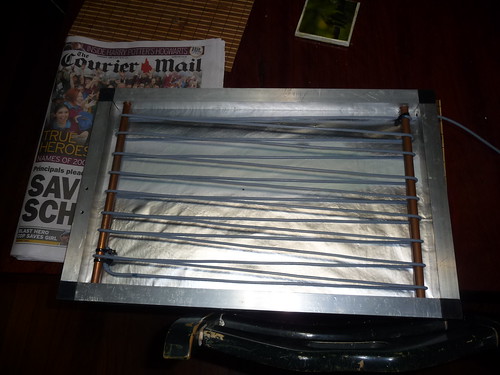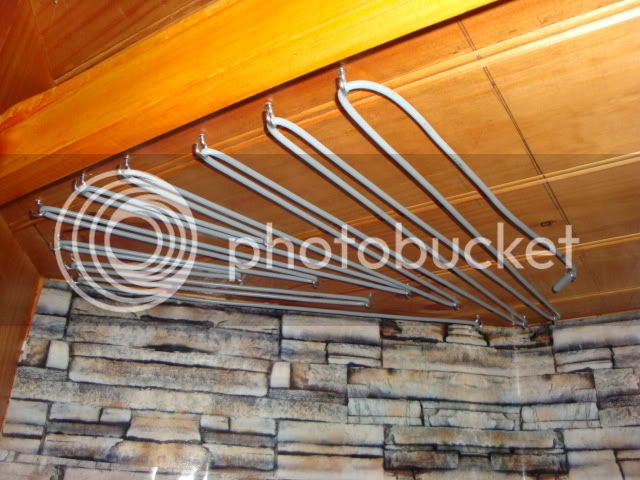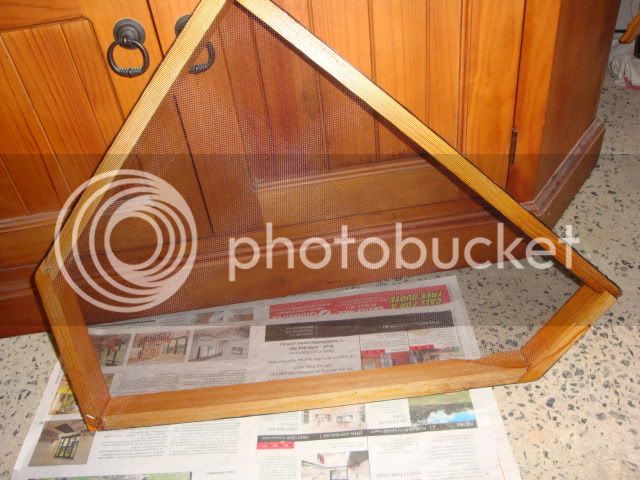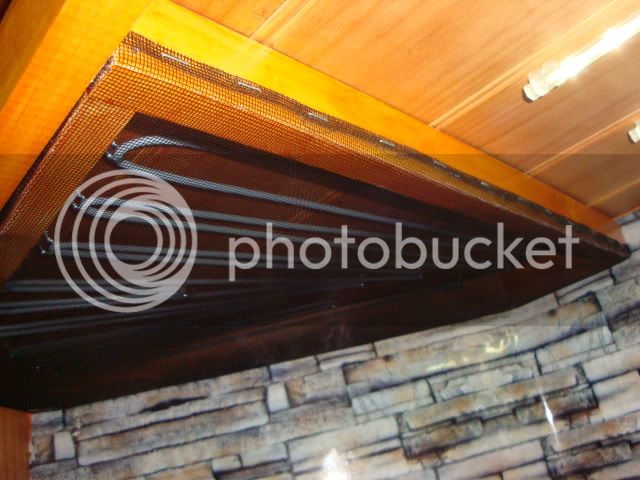Firedrake
Well-Known Member
Thanks for all the replies guys, I'm thinking of using it for a SWCP, if I mount it on the roof or side of the enclosure will I need a heat light or extra source of heat for the bottom as well?

Hey Saximus, this is my heat panel that l make and it maybe what you were thinking of with aluminium foil behind but for the pic l have removed the mouse wire (6mm squares) covering.....solar 17 (Baden)

Hi Nico (imo) under the shelf so it can warm the shelf as well....Baden (solar 17)Great idea baden , i am making 1 similar to the 1 you made , they only question is should i just fit it to the ceiling above the heat shelf , or would it be better under the shelf so it heats under it aswell as the shelf ? There is a light under the shelf at the moment that could be moved .
cheers nico
i would be concerned at the sharp bends in the cord, which over time may perish and burn through.I used dickyknee's method to make a heat cord panel in a strangely-shaped cabinet conversion. Here are some pics.
Step 1: put cup hooks in the roof of the enclosure where you want to put the heat cord.
Step 2: wind heat cord through the cup hooks

I would be concerned with the sharp bends in the cord , which over time are likely to perish and short through.
Step 3: Make a frame out of timber or the material of your choice and cover with aluminium flyscreen. (I stapled it on.)

Step 4: Screw the frame to the roof of the enclosure to protect the heat panel.

It's very simple and I'm using a 50W cord to heat a Darwin enclosure. His basking spot is on top of the heat panel and keeps a cozy temp despite being in a VERY cold room.
Heating from above seems to fight the laws of physics. In Newcastle 13 watts underneath is fine whereas you need 50 watts plus from above. This uses a lot more energy unecessarily!One point l forgot to mention after reading "Bluetongue1"s post is that the heat cord in my homemade heat panel is 80 watts as l found any less wasn't up to it and l live in Brisbane....solar 17 (Baden)
We made a heat panel using two thin tiles and a heat cord. The cord was the 25watt one and 3 metres long. we put one tile on the bottom then wound the heat back and forth make sure each loop has a wide bend not tight otherwise you will damage the cord we did this for the whole tile then put another tile on top and did three strips of heat proof tape to hold the tiles all together we then put it in the corner and plugged in perfect sits around 28 degrees and have a thermometer and thermostat pushed in the side just to make sure, it leaves a small gap of less then 1cm all the way around for excess heat to escape so wont overheat and catch fire. my snake loves it as we put a small square of marine carpet and then her hide on top. happy snakewill post pics in a second.
Enter your email address to join: